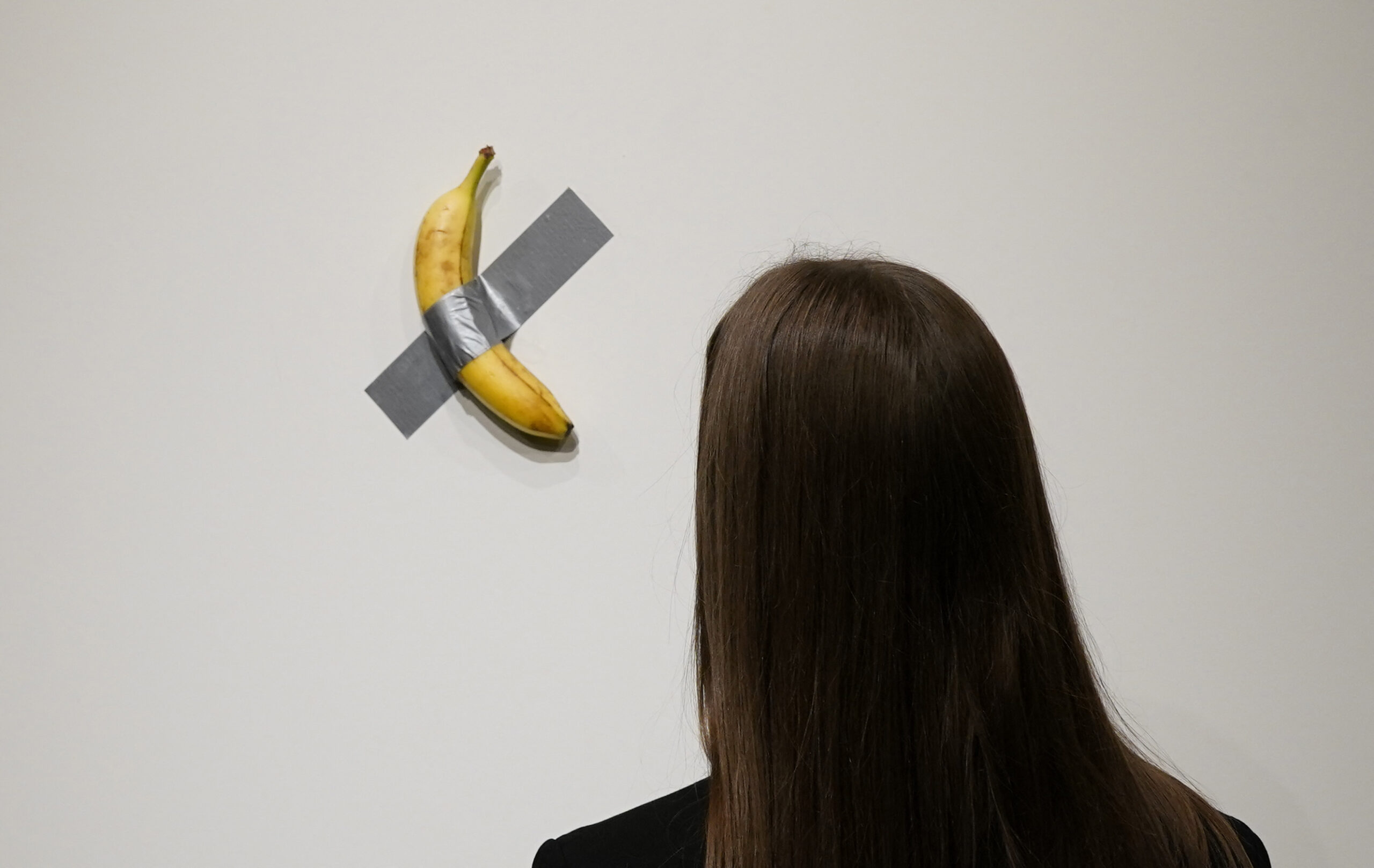
If the walls of the old Senate Session Hall in the former Legislative Building in Manila could speak, imagine the stories they would tell.
As home to members of the Philippine Senate from 1926 to 1996, the historic venue had been a silent witness as senators from various eras debated and charted the Philippines’ future, from the country’s growing clamor for full independence from America in the 1930s to its rejection of a new US bases treaty in 1992.
Its walls remain mute to this day, but thanks to a two-year, P20-million restoration project undertaken by the National Museum, the old Session Hall along Padre Burgos Avenue in Manila has been restored to its prewar glory, from its rich cream-colored walls down to its vibrant red floors and baseboards.
The old Session Hall was also where then Senator Benigno “Ninoy” Aquino Jr. and his allies in the opposition delivered privilege speeches during the run-up to martial law in 1972.
It was closed and later turned into one of the National Museum’s galleries during the remainder of the Marcos years. (The Batasan Pambansa in Quezon City housed the parliament in the Marcos era.)
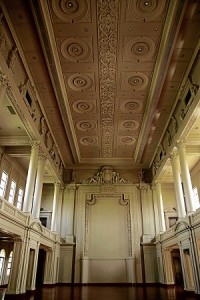
When democracy was restored after the People Power Revolution in 1986, the Senate and Congress returned to their old homes in the Legislative Building.
Then in 1996, the old Session Hall was closed again after the Senate moved to its new home at the GSIS Building in Pasay City. Work on the Session Hall’s restoration started in April 2010.
Directly below the Session Hall is another hall once used by members of Congress. It has since been converted to a gallery displaying Juan Luna’s “Spoliarium.”
First event
For its first event, the newly refurbished Session Hall was the venue of a sit-down dinner last Sept. 29 hosted by businessman Ramon del Rosario Jr., chair of both the National Museum and the Philippine Business for Education, a nonprofit organization that recognizes and provides funds to deserving educational institutions and teachers.
During its two-year restoration, Jeremy Barns and Ana Labrador, the National Museum’s director and assistant director, respectively, pored over old pictures in their attempt to produce a newly restored Session Hall that’s as close as possible to the original.
If the National Museum could preserve great works of art, why not its permanent home, which also includes the former Department of Finance building?
By 2014, the National Museum would also take over the Department of Tourism building across Rizal Park.
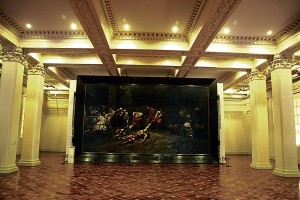
“Since the National Museum has enough space for its galleries, we won’t be turning the Session Hall into a permanent gallery,” said Labrador. “We can rent it out for private events on a case-to-case basis. The chairman (Del Rosario) envisions it as a venue for important events like state dinners.”
Considered the core of the then Legislative Building, the old Session Hall was designed by American architect Ralph Harrington Doane as a high-ceiling reading room. Doane, part of the team of the legendary architect and urban planner Daniel Burnham, was also a consultant to the Bureau of Public Works.
When the Commonwealth government abandoned its original plan to house the National Library in the yet-to-be constructed building, in favor of the Philippine Legislature, Filipino architect Juan Arellano stepped in to tweak the structure’s design and oversee construction.
Heavily damaged during the American liberation of Manila in 1945, the Legislative Building was in near ruins. But for some reason, the Session Hall remained intact with only its intricately carved hardwood ceiling blown off. When the newly independent postwar government worked on rebuilding the structure, it was able to restore much of the Session Hall to its original state.
Its prewar look became the peg of the restoration work started two years ago. The Session Hall had murals which were painted by Arellano in between the overhead concrete fretwork, as well as garland and statues done by leading Filipino prewar sculptor Isabelo Tampinco.
Barns and Labrador chose the 1930s, because it was during this period that the country’s independence movement started to intensify. But in the absence of detailed pictures of the original, they left the venue’s less ornate postwar ceiling intact.
Missing murals
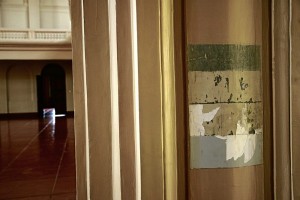
decades. PHOTO BY CHITO VECINA
Workers searched in vain for Arellano’s murals that might be hidden underneath layers of old paint. The pair decided to simply give both the ceiling and spaces between the statues a fresh coat of paint, which Barns described as a “Bureau of Public Works cream.”
Taking advantage of economies of scale, the bureau, a precursor of the Department of Public Works and Highways, had a standard color for nearly all public buildings during the Commonwealth period.
“We’re mandated by law to preserve this hall where many historic events happened,” said Barns, referring to the 1998 National Museum Law. “Recognizing the historical importance of this hall, then Senator Neptali Gonzales included its preservation in our charter. He was concerned that the hall he and his colleagues and predecessors had held sessions in be preserved.”
The in-house project, funded mainly by the Philippine Amusement and Gaming Corp. (Pagcor) through the National Museum’s endowment fund, tapped the expertise of the museum’s four heritage architects led by Evelyn Esguerra.
A series of concrete balustrades that bore the weight of a wooden floor that bisected the 15-m high Session Hall was damaged and replaced with faithful reproductions crafted by House of Precast.
The wooden floor, which literally divided the high-ceiling venue into two, wasn’t part of the Session Hall’s original grand and imposing design. With the addition of the wooden floor, Doane’s original intent of providing the hall with a high ceiling was lost.
In the years after the war, the senators sacrificed aesthetics in favor of space when they chose to add the wooden floor, which also effectively obscured the balustrades guarding the mezzanine that doubled as a public gallery. The Senate then met in the Session Hall’s lower level, and conducted its debates on the upper level.
“The space wasn’t exactly rundown,” said Labrador. “But we really needed to remove the wooden floor. It didn’t belong there and was already structurally unsound. We were joking among ourselves that what the war didn’t destroy, the senators did by adding that wooden floor.”
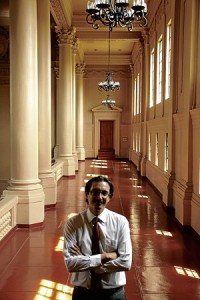
Removing the wooden floor supported by a network of steel beams cemented to both sides of the overhead balustrades proved to be the toughest part of the restoration.
“Since the huge wooden floor was attached to the balustrades, we had to slowly and painstakingly chip away bit by bit the cement to remove it,” said Esguerra, the architect. “In the process, almost all the balusters were destroyed.”
Even the concrete arches just below the overhead statues as well as portions of the geometric fretwork and sculpted garland that came into contact with the wooden floor were damaged. Using intact portions as their patterns, sculptors from House of Precast went to work doing spot corrections.
Untouched section
But almost all the balusters had to be replaced. To give the public an idea of how damaged the balustrades were after the wooden floor was removed, Barns and his collaborators decided to leave untouched a small section on the right side of the Session Hall.
They did the same to a small portion of a pillar to show the various paint jobs the hall had undergone through the decades—from cream to off white to light gray, and back to cream again.
Not only was the wooden parquet flooring on the first level not part of the Session Hall’s original design, it could also lead to termite infestation. It definitely had to go, too.
“When we removed it, we discovered all sorts of electrical wirings underneath,” said Labrador. “After the surface was refurbished, we decided to go for red floors and baseboards in keeping with the Session Hall’s original look. Back then, they used only red floor wax to keep floors shiny.”
This time, though, they decided to seal the red floor with epoxy. The team also replaced the venue’s lighting system and had a more modern, energy-efficient air-con system installed.
Windows that were permanently locked from the outside because of a concrete barrier were replaced and opened up. Upon Barns’ instructions, workers also had to fashion a French-type window that leads to an outdoor veranda.
“You couldn’t go to the balcony before because they locked the doorway,” said Barns. “We also had to clear the place of various stuff, from tanks to air-con units (compressors), before we could even begin cleaning and refurbishing it.”
In the absence of any drawings or plans, there was no room for any “subjective” decision, Barns added. The task was pretty straightforward.
Perhaps to avoid being criticized by architects and historians, they made sure they didn’t add or leave out anything based on what they saw in old pictures.
“Without sounding self-serving, feedback so far has been all good,” Barns said. “No one expected it to be done. Most people have already forgotten about the Session Hall.”
They could have finished the work much earlier, but they were just within schedule because most projects of this nature had a two-year life span, Barns added.
Enough funds
“Money was really not a problem because everyone agreed that it was a worthwhile project. It was a very important project, but it wasn’t a mega project. It just needed to be done with care and attention. I think we’ve basically achieved our objective of restoring something that would evoke the sense of grandeur and purpose of this building.”
On Oct. 29, President Aquino, patron and honorary chair of the National Museum, will inaugurate the newly restored venue.
As a senator himself early in the new millennium, Aquino never had the chance to debate with his colleagues or deliver privilege speeches within the old Senate Session Hall, but his late father Ninoy once did, and did so brilliantly, with grace and conviction.
Visit the author’s blog at alexyvergara.wordpress.com



